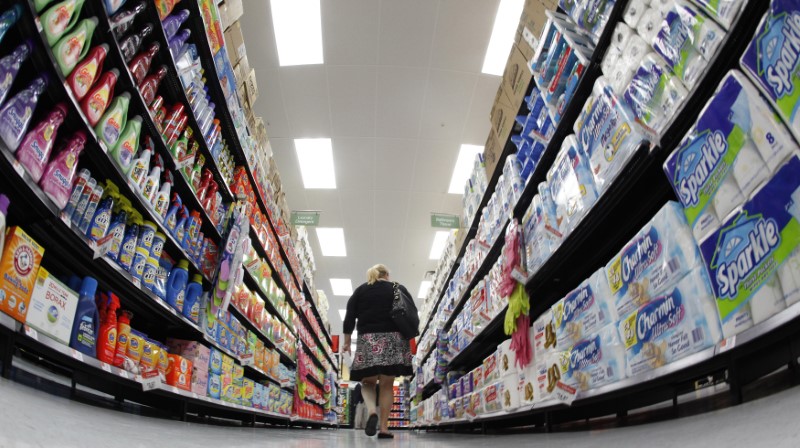By Lucia Mutikani
WASHINGTON (Reuters) - U.S consumer confidence surged to a near 17-year high in November, driven by a robust labor market, while house prices rose sharply in September, which should underpin consumer spending and boost economic growth.
The near-term growth outlook was, however, marred by other data on Tuesday showing a big rise in the goods trade deficit in October and a drop in inventory accumulation. The wider goods trade gap and weak inventory investment prompted economists to slash their fourth-quarter gross domestic product estimates.
"This economy has really got some legs if this confidence of consumers is to believed," said Chris Rupkey, chief economist at MUFG in New York.
The Conference Board said its consumer confidence index increased 3.3 points to a reading of 129.5 this month, within striking distance of 132.6, which was touched in November 2000. The strong confidence reading largely reflected households' upbeat perceptions of the labor market.
The survey's so-called labor market differential, derived from data about respondents who think jobs are hard to get and those who think jobs are plentiful, was the best in more than 16 years. This measure closely correlates to the unemployment rate in the Labor Department's employment report and is consistent with further absorption of labor market slack.
The labor market is near full employment, with the unemployment rate at a 17-year low of 4.1 percent. The share of consumers expecting more jobs in the months ahead increased to 22.6 percent this month from 18.7 percent in October.
The proportion of those anticipating fewer jobs fell to 11 percent in November from 11.6 percent the prior month. More consumers said they planned to buy houses and major appliances over the next six months.
Confidence is also being buoyed by a resurgent stock market amid expectations that President Donald Trump and his fellow Republicans in Congress will push through hefty corporate tax cuts. Congressional Republicans have unveiled a broad package of tax cuts, including slashing the corporate income tax rate to 20 percent from 35 percent.
BULLISH CONSUMERS
Economists said bullish consumers, together with the tightening labor market, were compelling reasons for the Federal Reserve to increase interest rates next month despite worries about persistently low inflation. The U.S. central bank has raised rates twice this year.
The dollar was trading higher against a basket of currencies, while prices for U.S. Treasuries were little changed. Stocks on Wall Street rose, with the Standard & Poor's 500 index and Dow Jones industrial average hitting record highs.
A separate report on Tuesday showed the S&P CoreLogic Case-Shiller composite index of house prices in 20 metropolitan areas jumped 6.2 percent in September on a year-over-year basis after increasing 5.8 percent in August.
A dearth of homes for sale and strong demand are pushing up house prices. While rising house prices are boosting equity for homeowners, the chronic shortage of properties is constraining home sales. The combination of rising consumer confidence and house prices bodes well for consumer spending.
"Confidence isn't a perfect gauge for consumer spending, but having the strongest confidence level in nearly two decades certainly helps," said Jennifer Lee, a senior economist at BMO Capital Markets in Toronto.
In a third report, the Commerce Department said the goods trade deficit jumped 6.5 percent to $68.3 billion in October, boosted by rising imports of industrial supplies, consumer and other goods. Exports fell 1.0 percent as shipments of food, motor vehicles, capital and consumer goods decreased.
The department also reported that wholesale inventories fell 0.4 percent last month after edging up 0.1 percent in September. Retail inventories slipped 0.1 percent in October after declining 0.9 percent the prior month.
"Early in our fourth-quarter tracking, we think that both trade and inventories could be meaningful drags on growth during the quarter," said Daniel Silver, an economist at JPMorgan (NYSE:JPM) in New York.
Forecasting firm Macroeconomic Advisers slashed its fourth-quarter GDP growth estimate by four-tenths of a percentage point to a 2.5 percent annualized rate. Barclays (LON:BARC) cut its GDP forecast to a 2.3 percent pace from a 2.8 percent rate.

Trade added four-tenths of a percentage point to the economy's 3.0 percent growth rate in the third quarter while inventory investment contributed 0.73 percentage point.